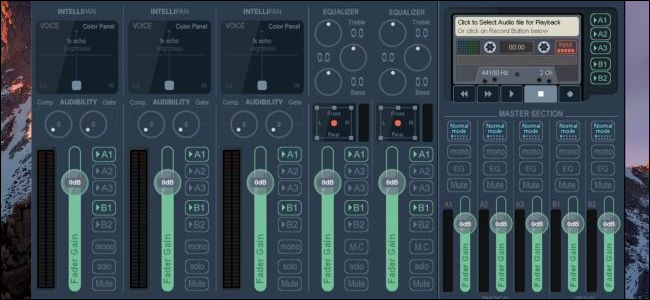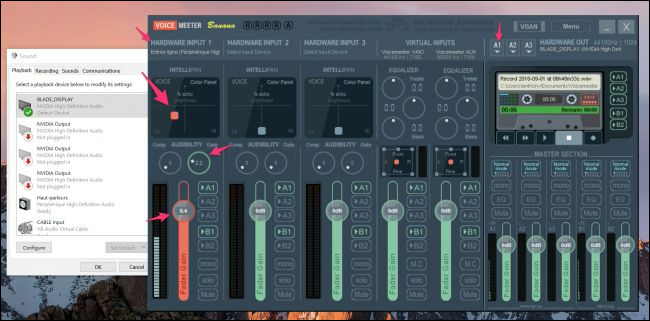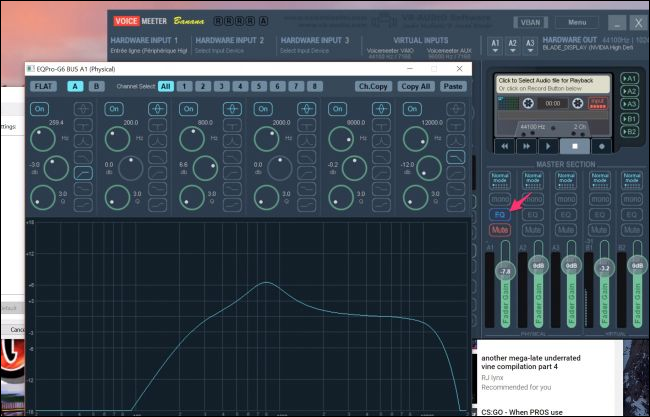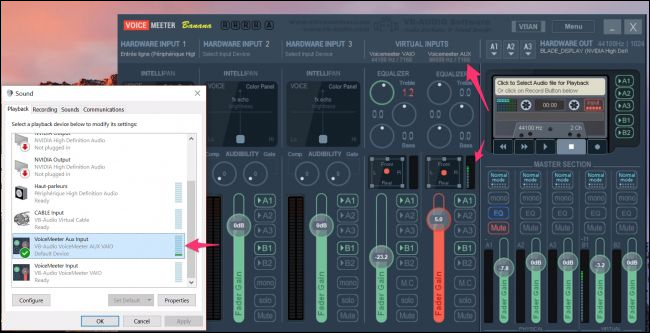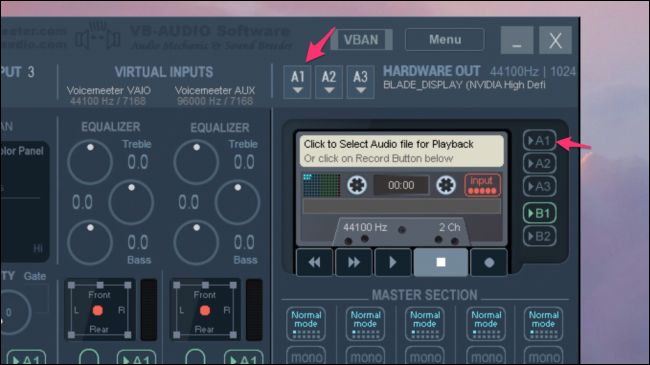Audio equipment can be costly. Audio mixers, used to balance and EQ audio, can easily cost hundreds of dollars, and while they're very nice to have on your desk, you can achieve many of the same effects through software.
VoiceMeeter is a free app that functions as an in-software mixer board. While it's a little complex, it's about the same experience you'd get out of a hardware solution. VoiceMeeter has two versions, a simple version just called VoiceMeeter, and a "pro" version called VoiceMeeter Banana. They're both free, so for the sake of tutorial we'll be using Banana. You can download either one from VB-Audio's website. It would also be a good idea to install VB Cable as well.
After you've got it downloaded and installed, go ahead and fire up VoiceMeeter. After it performs its initial setup, you should see a lot of new audio devices in the sound settings. Don't worry; this is normal, and each one has a use. If you'd ever like to disable VoiceMeeter, you can just switch back to default sound settings.
The first thing to do is to configure inputs and outputs. The "Hardware Input 1" at the top left will be your microphone, so click it and select your mic from the drop-down menu.
Next, configure the output on the right. There are three main outputs, and all of them will mix to form one final microphone output. You can use the "Intellipan" and the effects below to do some basic processing, or you can use the full graphic equalizer built into VoiceMeeter.
This gives you full control over your microphone's audio. You can even EQ your desktop audio and send it down the mic line. Select "VoiceMeeter Aux Input" as your primary sound output device, and it'll show up under Voicemeeter Aux under virtual inputs.
The final mixing steps are pretty simple. The A1-3 and B1-2 are the different channels, and you can enable and disable which outputs you'd like in the final mix.
Voicemeeter also has tons of other features, such as configurable hotkeys, MIDI mapping, and lots of low-level audio configuration options. So, you can do quite a bit more with it, but it handles this basic EQ very well. If you're an audio geek, you might appreciate some of the other apps VB-Audio has to offer. They're all completely free, so it's worth giving them a try.

